
Shocking: Trey Brown Turns Down Opportunity for General Manager Interview
Cincinnati —Trey Brown will stay on as the Bengals’ front office manager for a more campaign.According to Tom Pelissero, the Bengals’ senior personnel executive turned […]

Cincinnati —Trey Brown will stay on as the Bengals’ front office manager for a more campaign.According to Tom Pelissero, the Bengals’ senior personnel executive turned […]
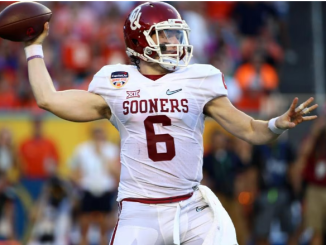
TAMPA Although Baker Mayfield still has a grudge, the quarterback is showing “calm confidence” in his summer exercises, according to new offensive coordinator Liam Coen […]

Outfielder Manuel Margot was acquired by the Twins via trade in the summer, but in his debut season with the team, Margot has had difficulty […]
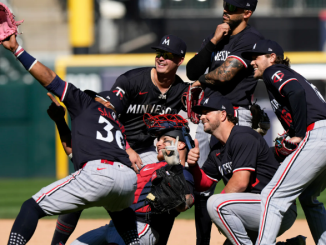
On Monday night, Jorge Polanco returned to Target Field, albeit donning a new jersey. For the first time since the Twins traded him to the […]

After missing the Italian Open for three years running, Matteo Berrettini will make his comeback this year, and he is ecstatic. The Italian appears to […]

Before the 2024 Madrid Open final, Felix Auger-Aliassime and Andrey Rublev, in their own words, dealt with a few concerns. During the game, the Canadian […]
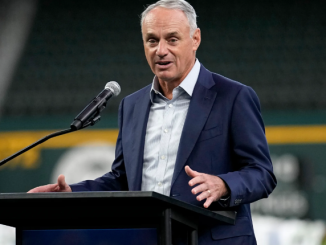
The ongoing Oakland A’s relocation tragi-comedy has served as an acute reminder about how entitled sports team owners feel when it comes to getting public funds for stadium projects. This of course is not a new phenomenon, and the line of owners looking for such handouts is a constant presence across major professional team sports. On Monday, Major League Baseball commissioner Rob Manfred was asked about this issue during his appearance at the 2024 Associated Press Sports Editors Commissioners Meetings. Here’s his response: “There has been a long history of public financing of not just baseball but sports venues in general. Expenditure, public funds that people have seen as justified as part of the quality of life and entertainment opportunities available to residents in particular cities, as well as an economic driver. Certainly on the latter point, I recognize this is something that some will debate, but whatever the merits of it across the board, investment in baseball facilities is the best of the (sports) investments because of the number games. It just drives more people into the market for entertainment than any other sport just based on sheer volume. I do think that in today’s world, almost all projects, whether they be new stadiums, major renovations, all of those types of projects, almost without exception — and this is different than it was a couple of decades ago — are public-private partnerships with owners of teams making really substantial, hundreds of millions of dollars, investments. I think the Las Vegas project is a great example of that: it’s a billion-and-a-half dollar project where the public financing, I think the number is $380 (million) and the rest of that investment is going to be made by the owner.” This is not a notable departure from the usual spin put on such things from team owners or those who represent their interests. One person’s “public-private partnership” is another person’s corporate welfare. Manfred’s remarks, however, do invite fresh appraisals of these arguments typically put forth to justify putting tax dollars toward stadium construction. Manfred is correct that the practice of public financing of pro sports venues is an entrenched one. Just as entrenched, however, is the evidence that the “economic driver” aspect of ballpark construction is nonexistent. Academic research on the issue is unequivocal: Cities and states do not receive anything close to adequate return on their investments in pro sports facilities, be they ballparks, basketball arenas, football stadiums, or whatever. To cite just one, here’s the upshot of economist Robert Baade’s sprawling 1994 study on 48 cities across 30 years: “Far from generating new revenues out of which other projects can be funded, sports ‘investments’ appear to be an economically unsound use of a community’s scarce financial resources.” More specifically, Baade found that of the 30 cities with new venues, 27 showed no signs of measurable economic growth, and the other three saw per-capita income decrease after the respective venue was funded and constructed. This is not an outlier study. It’s representative of an overwhelmingly sturdy consensus, and no glib dismissals from those hoping to defend handouts can change those facts. The other noteworthy part of Manfred’s comments is the $380 million price tag for the public should the A’s move to Las Vegas actually happen. Manfred’s recollections are correct, in that $380 million is the purported figure that Nevada taxpayers will cover. Indeed, Nevada Gov. Joe Lombardo signed a $380 million public funding bill back in mid-June. However, as Neil DeMause explained at Field of Schemes, the actual price tag on the public contribution will almost certainly be much, much higher. This is no accident, as owners and the commissioners who advocate for them have a chronic habit of soft-pedaling how much money the public is going to wind up contributing to projects that often turn into boondoggles. Even in the rare project touted as being wholly financed by private money, you often see valuable city-owned land being donated, infrastructure improvements that otherwise would not have been necessary being ponied up for by the public, and property-tax abatements granted to the team that hurt the municipal bottom line as much as any direct debit would. Ignoring these realities is of course what’s necessary to make the project seem more palatable to a suspicious public. Speaking of which, it’s no accident that when these projects are put to a public referendum, they usually fail. That was the case recently in Kansas City, as both the Chiefs and Royals sought handouts; more than 58% of voters rejected the state tax referendum in April. This is why teams and local officials pining for some kind of vanity project often do what they can to avoid letting the public have a direct say in how their money is spent. The A’s and team-friendly civic leaders in Las Vegas have done just that. Grassroots opponents of using tax dollars for sports facilities usually want nothing more than to put it to a vote, and those on the other side are hellbent not to let that happen because they know how it goes when the hoi polloi get asked whether a billionaire team owner should get some of their tax dollars. Very likely, the response to questions such as the one posed to Manfred won’t change – it will remain a mix of obfuscation and evasion. You, though, have the power to acknowledge the facts and not believe what you’re being told, no matter how many times you hear it.
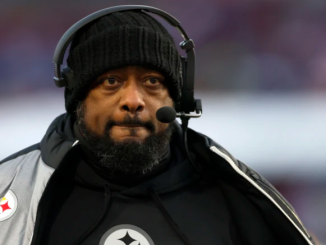
In addition to being a player’s coach, Mike Tomlin of the Pittsburgh Steelers is renowned for his ability to demand respect in the locker room. However, a former player has stated that Tomlin is under pressure. On the “Craig Carton Show” on FS1, former Pittsburgh offensive lineman Willie Colon stated that the coach is under pressure. Colon said, “I love Mike Tomlin, but I have to say this—he’s on the hot seat.” However, Tomlin’s ex-player didn’t end there. He also criticised the coach for his failures during the playoffs and his inability to win simple games. “When you talk about his overall record, you talk about in 17 seasons, he has an 8-10 playoff record, only four seasons with playoff wins, and he’s had some bona fide teams even with Ben Roethlisberger,” Colon stated. “Mike Tomlin’s current problem is that he wins games that he should win but loses games that he shouldn’t lose. Rewind to this year. He was defeated by the Arizona Cardinals and the New England Patriots. Had no right to lose those matches. And now Steeler Nation is angry because, despite facing a team that is far above average at the moment, they still lose stupid games. “Well, who are the Pittsburgh Steelers?” I ask myself. Right now, are they the dweebs or the bullies? You look like the dweebs if you lose against the Cardinals and Patriots.” In part, the quarterback position is to blame for the Steelers’ current problems. of the offseason, Pittsburgh acquired Russell Wilson, so Steelers supporters will be hoping for a change of luck. Even though Tomlin has never had a losing season in his NFL tenure, he will be under pressure given that the Steelers have placed third in the AFC North the past two seasons. Another uneventful season finale could mean the end of his stay in Pittsburgh.

Tyler Soderstrom, a catching prospect for the Oakland Athletics, had a poor major league start the previous season. After being called up during the All Star Break, he hit.160/.232/.240 in 45 games. After a dismal performance in spring training, the A’s assigned him to Triple-A to begin the season, which came as a bit of a surprise. He’s improved significantly in 2024 thus far. Since our previous meeting in Las Vegas, he’s up to.250/.342/.540 and his plate discipline has somewhat improved. Though he’s still not a reliable defensive catcher, the bat is slowly but steadily improving. Soderstrom ought to have the chance to return to Oakland at some point this year in order to establish his credentials. After first baseman Ryan Noda was sent to Triple-A last week, Soderstrom is probably just one or two injuries away from having another opportunity to return to the major leagues. But will he benefit from it? When he does return, where will he play? Although Soderstrom has been playing behind the plate in Las Vegas, he is hardly playable at catcher, as demonstrated by the small sample size between Oakland and this year’s spring training. In his three months of action in 2023, he was among the worst framing catchers in the league and lacked Shea Langeliers’ powerful arm. He’s not athletic enough to play in the outfield, so most nights he’ll probably be learning first base or filling in as the designated hitter. But if that’s the case, he needs to get better with his bat. So far, his slash line has been good enough for a Triple-A 112 wRC+. To compensate for his lack of defensive ability, he will need to hit at least that well if he is to be a productive major leaguer. A significant obstacle to Soderstrom’s comeback is the evidence that Kyle McCann can play in the major leagues. Despite just making 28 plate appearances, he has excellent plate discipline and solid defensive play behind the plate, hitting.375/.464/.625 in those games. Soderstrom has almost little chance of staying at catcher in Oakland if it keeps up. However, if he can demonstrate his hitting ability, that doesn’t imply he can’t play major league ball. Soderstrom will be a valuable member of this Athletics club if he can carry over some of his Triple-A success into the majors. The A’s need that to be the case because his trade worth will drastically decrease if he is not selected in a second call-up. Soderstrom needs to do well for the A’s. It doesn’t matter if he bats well enough for them to deal him for future value or if he will be an impact bat for them in the future. For the lefty, this is a make-or-break year. […]
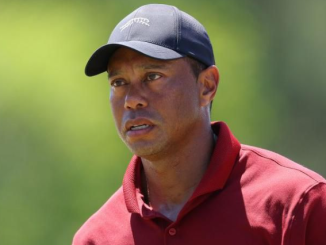
Hughes Norton, the golf legend’s first agent, has spoken out about the “worst part” of his association with Tiger Woods. Norton has attacked Woods’ social abilities, despite not having spoken to the 15-time major winner since being fired by him. When Woods went professional in 1996 at the age of 20, the former superagent represented him for two years while he was prepping for the PGA Championship at Valhalla. When Norton worked as a junior talent scout at IMG seven years ago, that’s when he first met Woods and his father Earl.Throughout his tenure, Norton collaborated with many of the greatest golfers, including 11-year representative Greg Norman. Despite getting Woods record-breaking sponsorship deals, Norton’s firing caused IMG to cut connections as well.Woods persisted in using the sports agency, with Mark Steinberg serving as his agent to this day. As part of his large payout, Norton was also barred from competing with the company and was subject to a ten-year confidentiality agreement. Norton never went back to work in the industry, but he did open up about his experiences in his recently released novel “Rainmaker,” where he discusses his breakup with Woods. After Tiger Woods abruptly broke their relationship, Norton expressed his emotions of betrayal in an interview with Today’s Golfer. He stated, “For all the latest on news, politics, sports, and showbiz from the USA, go to The Mirror US.” “The worst part honestly was that there was no explanation,” Norton stated. “The way Tiger breaks up with people in his life—whether they be managers, girlfriends, or buddies—is just so strange. I would adore having a conversation with Tiger now and asking him, “Look back 25 years, why was that? “I never got the impression that something wasn’t right or that you weren’t content. That makes me feel like a betrayer since it was so difficult to accept,” she said afterwards. “It was pretty dishonest of him to say, ‘See you later,’ after such a short while.” Hughes went on, “Tiger was incredibly egocentric. From a young age, he was entirely focused on his goal of being the best golfer in the sport’s history. “He was very self-centered; nothing else mattered but his demands. There was a complete lack of empathy because he had never really learned how to communicate with others.” Recalling how a “emotionless Tiger stood zombie-like” to give the news, the former spy admitted that that was the last time they had spoken. Hughes also thinks it unnerved him since in just a year, Woods went from being an amateur to the world No. 1 player at the Masters and back. “Fame was something that was uncomfortable for Tiger,” he said. “It was, in fact. It was a disturbance in his existence.” “At one point he said, ‘You know there’s this $40 million from Nike, $20 million from Titleist, it’s paper money,’” Hughes recounted, summarising the situation correctly. Taking up a winner’s check from a tournament he had recently won, he declared, ‘This $300,000 that I won in Las Vegas, that’s real,” […]
Copyright © 2024 | WordPress Theme by MH Themes